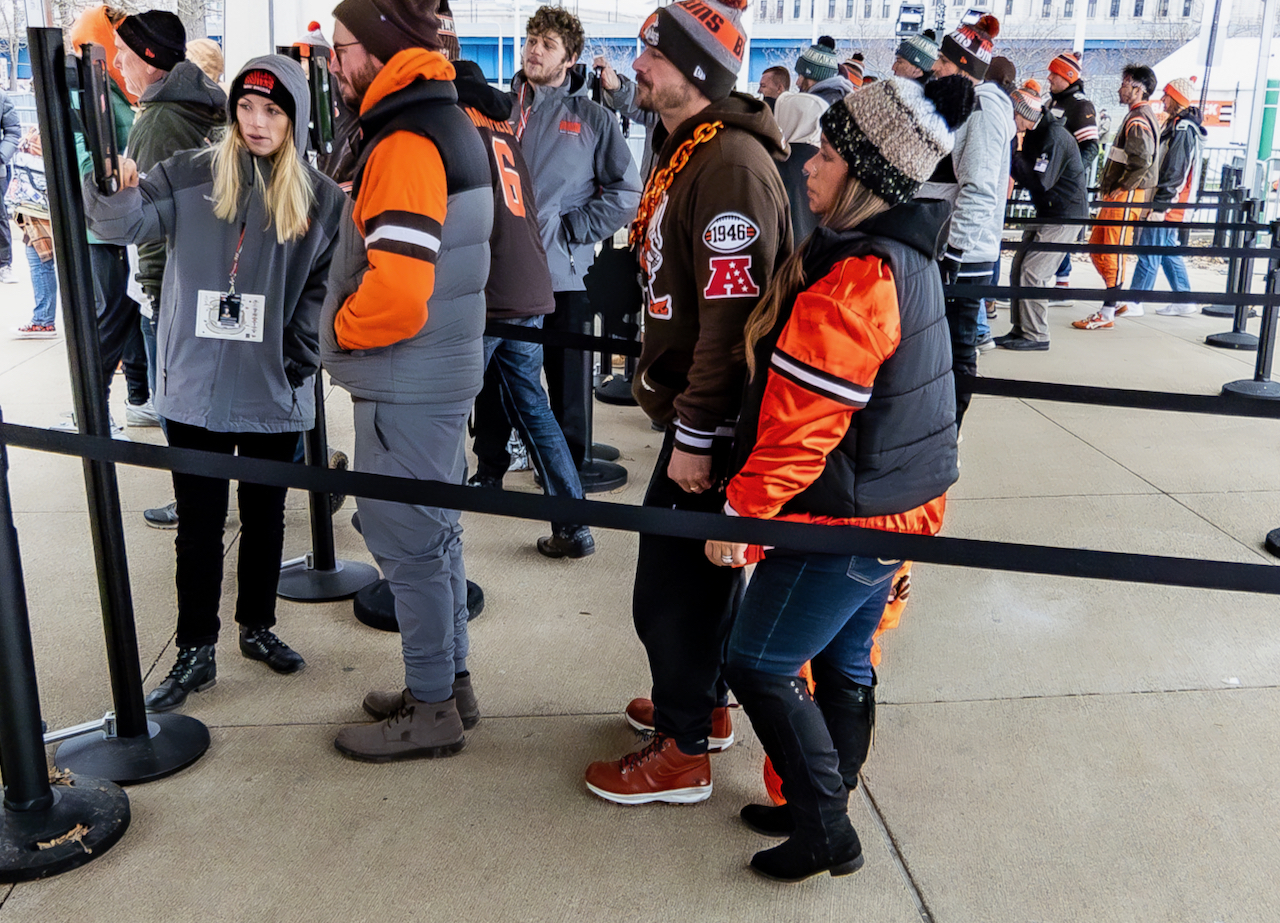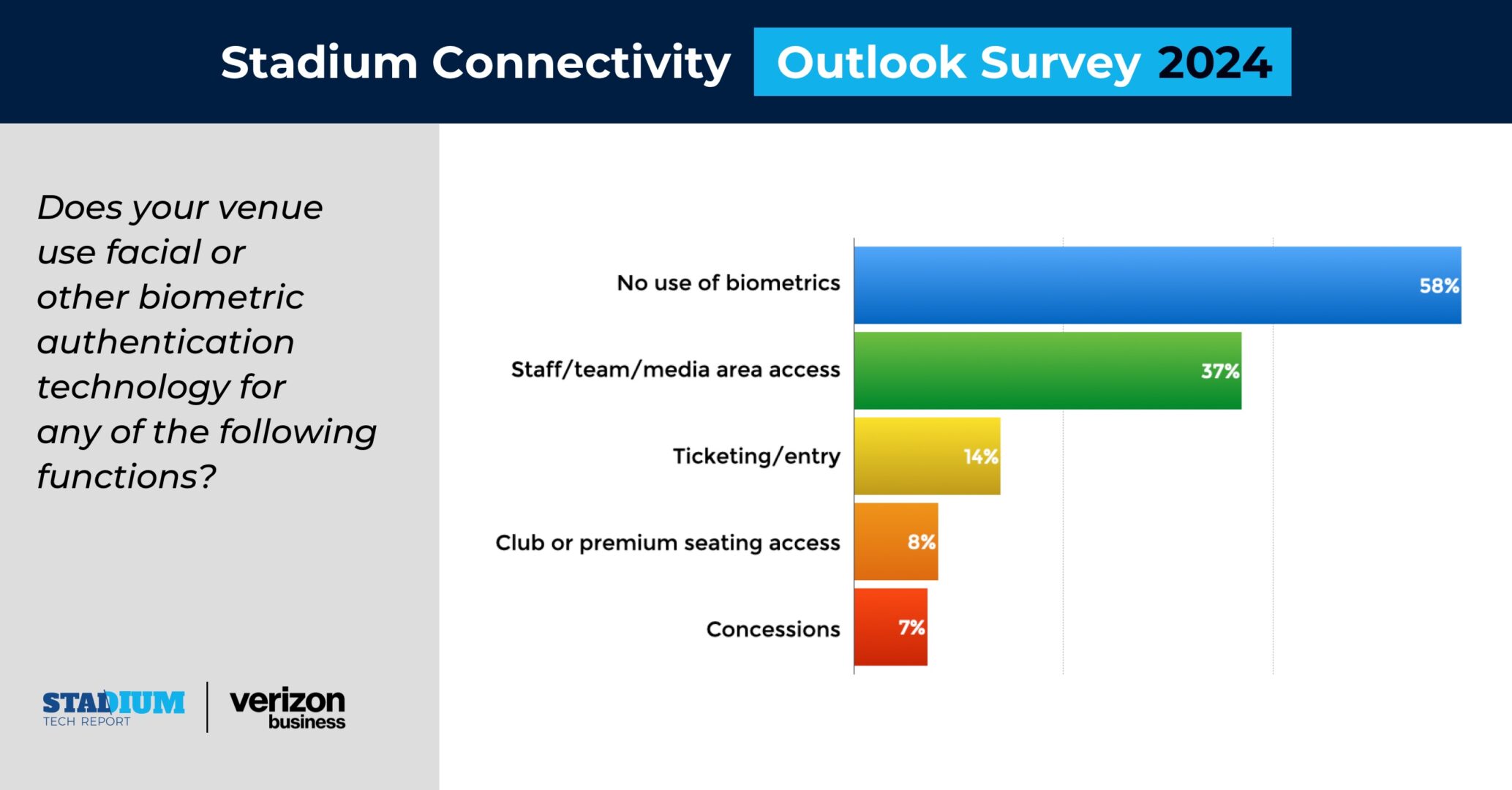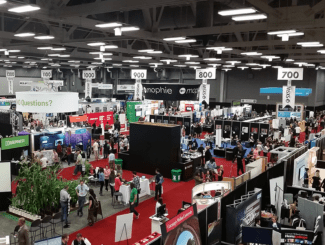
Biometric technology, a new category for this year’s Stadium Connectivity Outlook survey, was cited as a top initiative for 2025 by nearly 47 percent of respondents, good for fourth place on that list. Another 37 percent of respondents said they are already using biometrics for applications that include verification of credentials for staff and media entrances, a sign that use of facial authentication or other biometric systems are starting to gain wide acceptance in venue applications.
Download the survey results and white paper today!
Facial authentication tech used for ticketing, concessions
A facial authentication software company called Wicket has been the leader in this space, with customers like the Cleveland Browns, the Atlanta Falcons, the New York Mets and the Tennessee Titans among those using Wicket-based systems for ticket verification. According to end users, the facial- authentication ticketing systems can be noticeably faster than traditional hand-held or kiosk-based ticket scanning of bar codes or NFC transactions. Major League Baseball also rolled out its own facial- authentication ticketing systems in 2024, with six teams installing the devices.

This past year, several vendors and caterers have partnered with teams to develop systems where facial authentication can be used for both payment and age verification to support “buy a beer with your face” type applications meant to speed up concession transactions. And the National Football League gave facial authentication technology another boost this season by requiring all 32 teams to use a Wicket-based system for media and staff access to on-field and other sensitive areas.

The new home of the NBA’s Los Angeles Clippers, the Intuit Dome, is probably the leader in the biometrics space, as the team is pointing event attendees to enroll in an app that allows visitors to use facial authentication for ticketing as well as for concession and merchandise purchases. While 58 percent of our survey respondents said they are currently not using any biometric technology, that number is sure to change over the next 12 months as more teams look to find ways to use biometrics for faster, more secure verification applications.
Download the survey results and white paper today!







